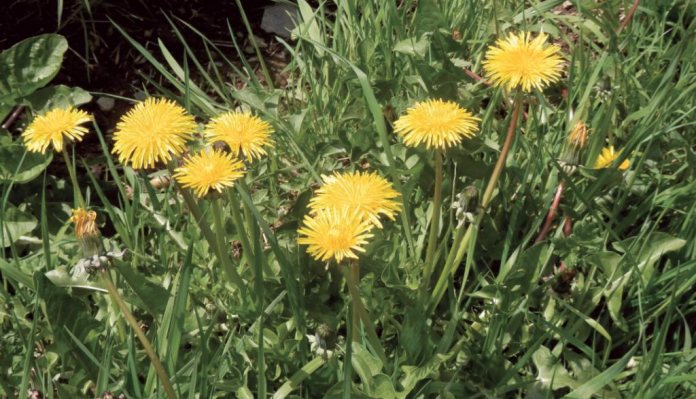Bushcraft: Some Useful & Edible Plants
- By John Fenna
-
372
 Comments
Comments
- Last updated: 31/07/2017

To me, one of the joys of Bushcraft is foraging for wild foods and plants that are useful for a range of tasks and tools. The only drawback is that learning what is safe to eat or handle is fraught with hazards – so many poisonous plants look very similar to those that are tasty treats!
Never put anything in your mouth or handle anything with your bare hands that you are not 100% certain is safe to eat and non-harmful. Even if a plant is listed in the books as edible, some often cause allergic reactions in a minority of people. When foraging, you have to be 100% sure that things are safe for you to eat and touch.
In this article, I am going to look at some plants that are thought of as ‘safe’, but even then, some, like nettles, can give a nasty sting if mishandled. Be sure, be safe. Get some good field guides and learn your plants. I recommend ‘Wild Food’ by Roger Phillips and ‘Food for Free’ by Richard Mabey (the first editions are better than more recent versions) as well as the excellent ‘River Cottage’ handbooks.
Here are a few plants and trees that are easy to recognise and give good eating and/or useful materials.
The dandelion is a most maligned plant, often thought of as a weed, but to me is a great source of food and drink. The flowers can be used to make a very pleasant wine, the young leaves used in a salad, and the roots used as a vegetable or roasted to make a good hot drink referred to as ‘dandelion coffee’ (though it tastes nothing like coffee…). The roots are best in autumn. Dig them out carefully and scrub off as much of the outer ‘skin’ and dirt as you can. As a vegetable, slice the roots into rings and sauté them in oil. When browned, add a little water and salt and stew the roots until they are soft and most of the water has gone. Serve with soy sauce.
To make ‘coffee’, dry the roots, then roast them until they snap easily. Grind the roasted roots fairly coarsely and use them like ground coffee.
The French name ‘Pis-enlit’ (piss-the-bed) gives you the idea that dandelions are quite an effective diuretic!
Nettles can give a nasty sting if not handled with care. Use gloves to harvest them. This is another ‘weed’ that I find incredibly useful, as it can provide one of the best cordages, makes a superior wine, a tasty beer, a good green vegetable and a refreshing tea. Nettle fibres were once woven to produce fabric for, amongst others, the German Army!
I have already talked about nettle string in another article, so here will concentrate on nettles as a food. Pick your nettle leaves before the plant has flowered and only pick the top 4-6 leaves, or you may end up with tough and bitter leaves.
You can eat the leaves either wilted in a flame (use the stalk to hold the top leaves over the fire, but eat only the top few leaves) or boiled in a little lightly salted water for about four-minutes and served as a spinach substitute.
Nettle tea is made by loosely filling a billy can or mug with leaves and pouring boiling water over them. Let the leaves steep for a few minutes, then remove the leaves and drink the tea. Old bitter leaves can have a very laxative effect!
Acorns can be incredibly bitter and are full of tannin. They can be processed into a ‘flour’ by leaching out the tannins with copious amounts of water, but can also be used with minimal processing as a very good coffee substitute.
Once you have picked your acorns, they need placing in boiling water for a few minutes to make it easier to remove the shells. Dry the peeled acorns, then roast them to a darkish shade before grinding them. Use as you would a ground coffee.
Birch Trees, sometimes called a ‘weed wood’, as they spring up on rough ground like weeds, are incredibly useful to the Bushcrafter. Shreds of birch bark and birch twigs make excellent tinder, the wood is great for carving, the bark makes beautiful containers and the sap can be tapped to make a refreshing drink or a traditional wine.
Tapping should be done in the early spring when sap is rising, and it is easy to take up to half a gallon of sap in a day. Do not take more than half a gallon per mature tree. Do not tap young trees.
A simple tap can be no more than a flap of bark raised with a knife or axe and a stick inserted for the sap to drip down into a container, or you can drill into the sap wood with an auger and fit a tube for the sap to run along. I use an auger the size of a demijohn cork and fit a cork with a hole for the hose to collect the sap and a solid cork to seal the wound in the tree once I have all the sap I am taking.
If you have just raised a flap to get the sap, tap it back after use. Open wounds in trees can introduce fungi etc. and cause the tree to die. Harvest your sap responsibly. Collect your corks from the trees once the sap has stopped rising.
If you are collecting bark for fire lighting or containers, take it from dead wood. The bark outlasts the wood due to the oils it contains.
